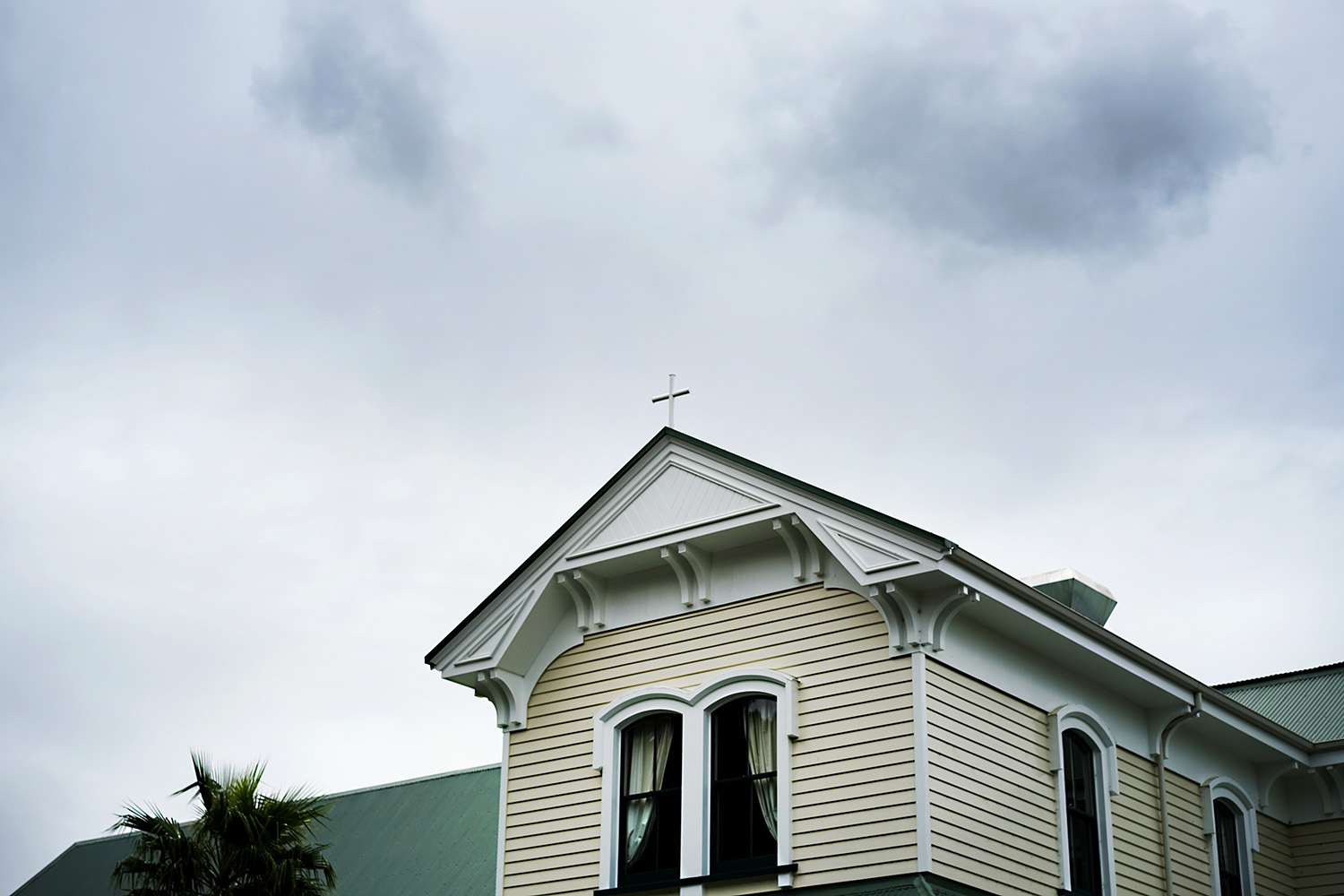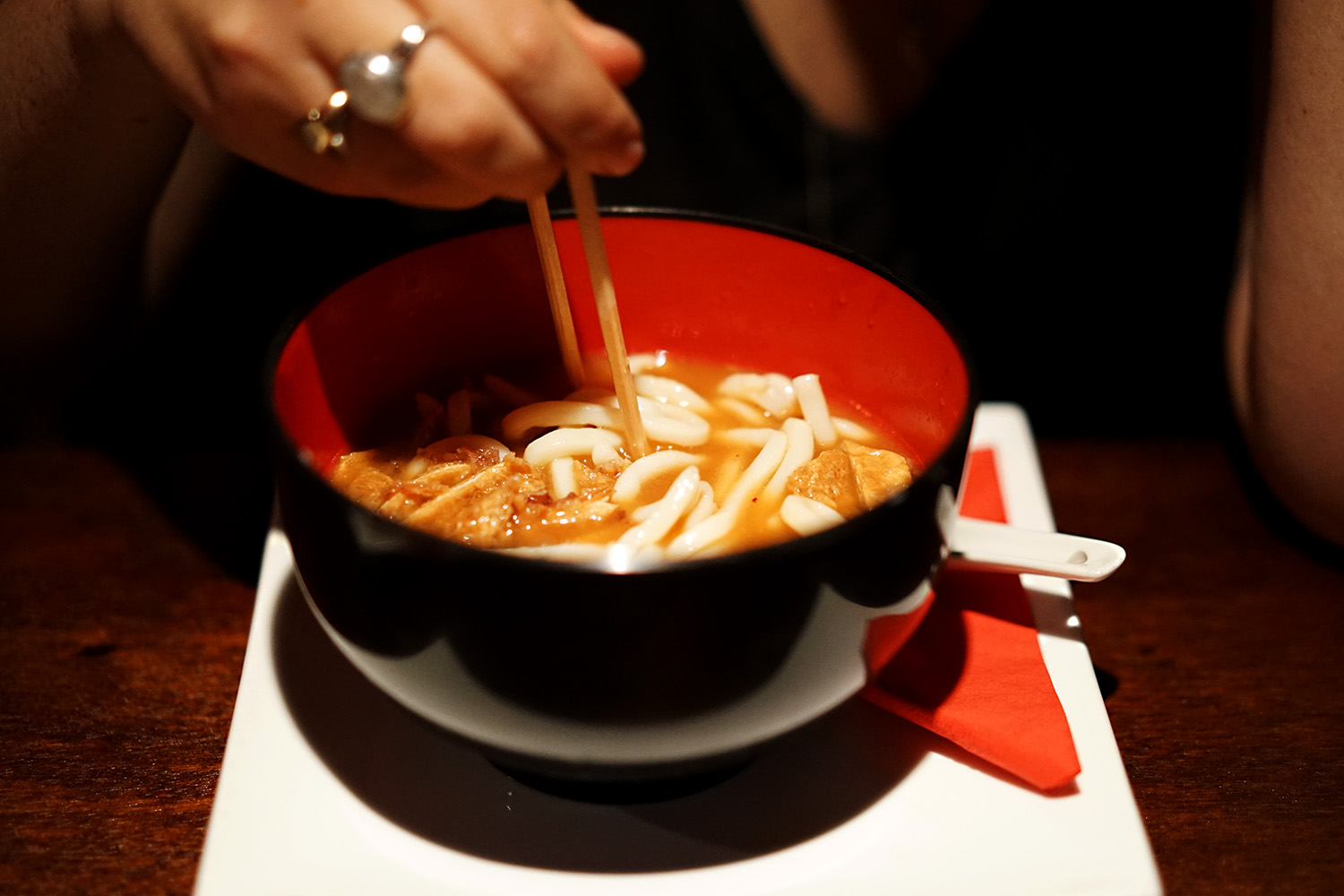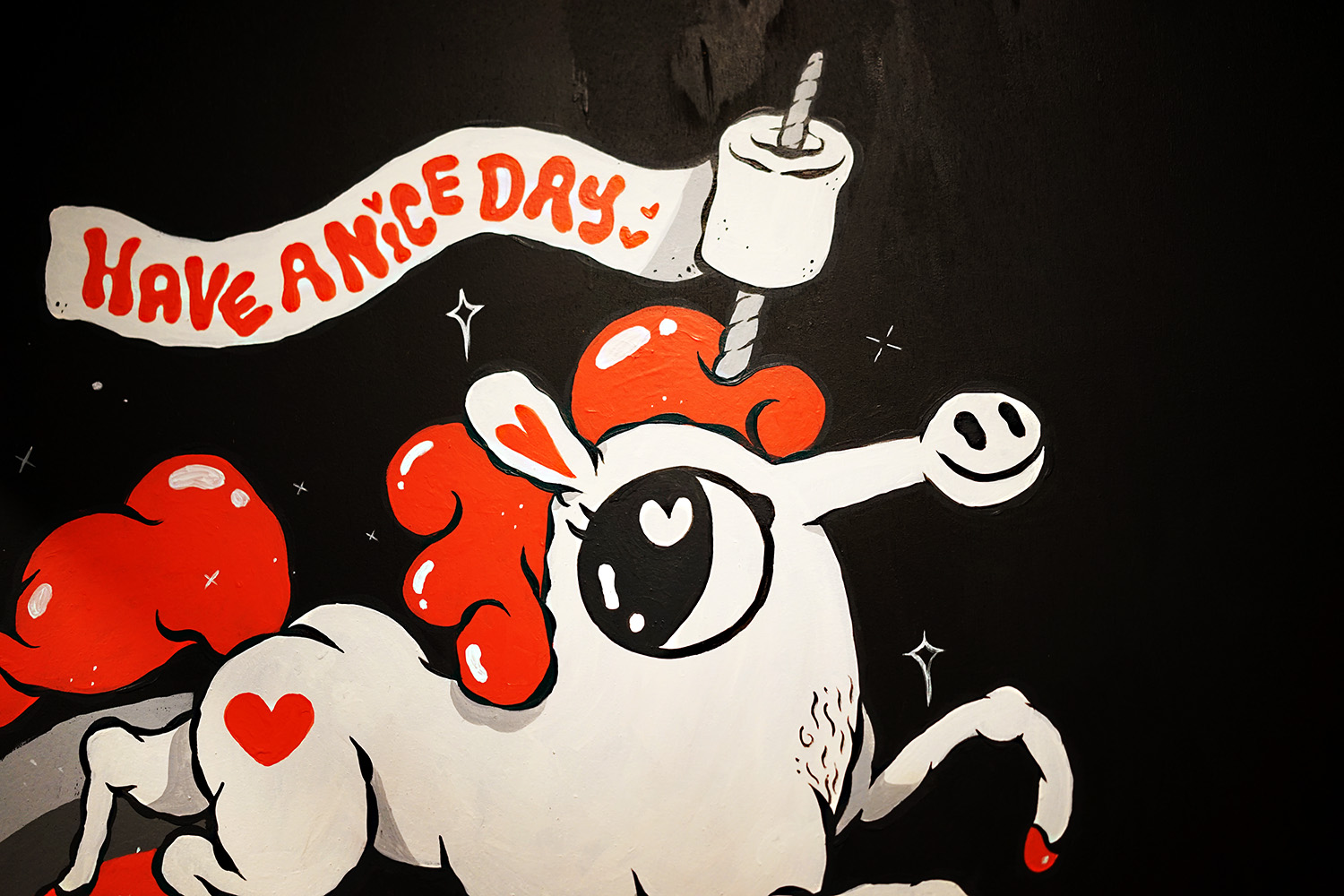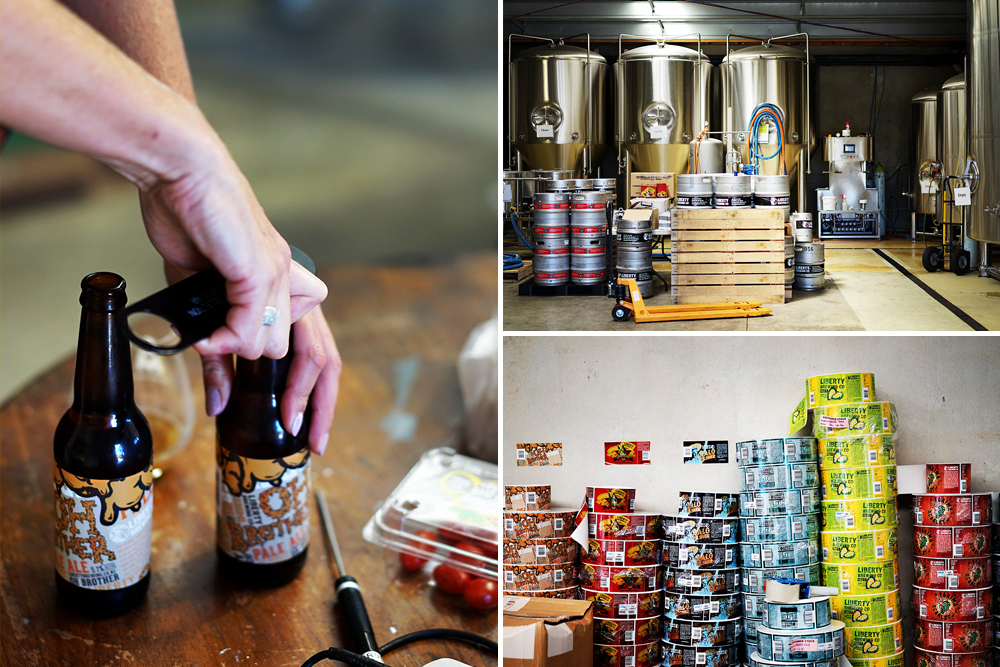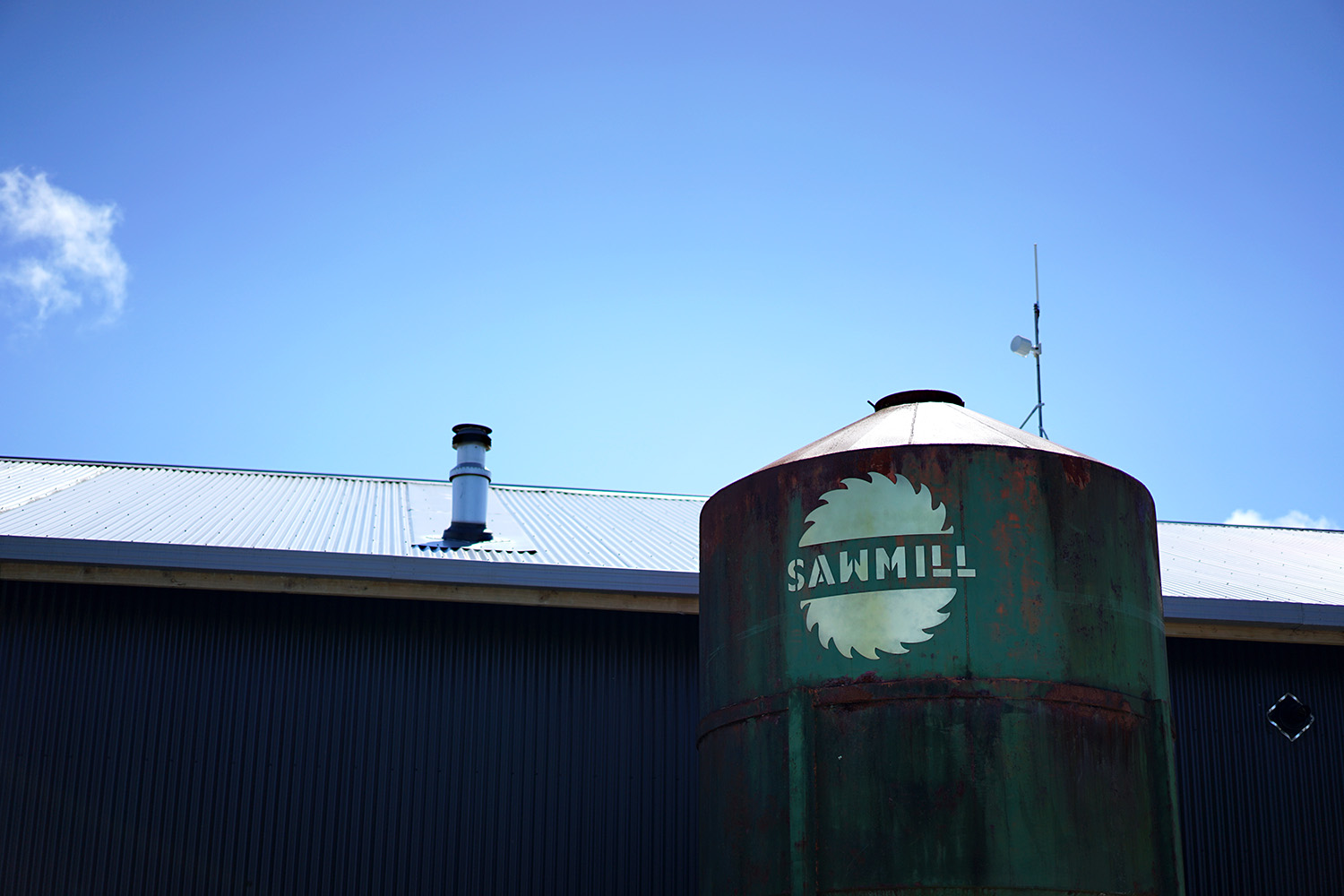Auckland Airport and the city built around it is an urban space about like any other. But once you cross the harbor bridge and head into the countryside, you’re suddenly face-to-face with the striking vistas of New Zealand.
Beautiful black sand beaches that stretch on for what feels like miles. Strange subtropical flora spilling out over the side of winding roads with weird looking, purple, chicken-esque birds called Pukekos wandering alongside them. It’s a landscape like no other, one that floored me when I first visited the Southern Hemisphere country in 2011. That beauty—and New Zealand’s exciting food and drink culture—has prompted my return again and again in the years since.
But to call New Zealand’s North Island “beautiful” feels like a weird understatement. It’s all endlessly rolling green hills and fields and forests full of trees the likes of which you’ve never seen before, with names that are tremendously difficult to pronounce. Oh, and its pies rank among some of the finest cuisine on the planet. Even the ones you take straight from the warm counter at the gas station. In fact, those are the best ones.
New Zealand also has a remarkably well-developed beer industry. It feels light years ahead of its neighboring Australia, and even has a couple laps on the UK. (And I say this as a proud Londoner.) As a market, it feels closest to the U.S. in terms of both prevalence and quality.
“It feels special because it's small, in a nice way,” bartender and beer blogger Phil Cook says of the local beer scene. “Small country, small town, surprisingly big beer scene. That makes it relatively easy to stay familiar with a lot of what's going on and avoid feeling lost or overwhelmed.”
And it’s certainly small. On a pair of islands that are comparatively sized to the UK, New Zealand has a population of just 4.7 million (by comparison, the UK has more than 65 million). This size allows formative cultures, like craft beer, to spread much more quickly. They nurture in urban hubs like Wellington, Auckland, and Christchurch, but then rapidly spread out to suburban and rural areas. Much like the wealth of plant life spilling over those country roadsides, proliferating and covering everything, it’s easy to get lost in them.
Along with Marlborough on the South Island, Hawke’s Bay is New Zealand’s premium wine region. Founded in 1851, Mission Estate is one of the area’s most established wine producers. Which means it’s as good as any a place to kick off a New Zealand visit.
We pass a large field of vines on our way up a hillcrest, where we find the winery, which is a former monastery. It’s now home to a tasting room and high-end restaurant that serves as the face of the winery. Smartly dressed waiters buzz around the place like hummingbirds, ferrying bottles of wine and delivering immaculately plated, vibrantly colorful dishes. Meanwhile, a small army of help begins to set up for a wedding in the space adjacent to the restaurant. It’s a rare occasion when it’s not fully booked.
“Our relative isolation from a craft brewing scene has really honed our sense of independence here, of doing things our own way. For us, making excellent beer is the starting point. The community means everything to us.”
The wine industry here in New Zealand is far more established than its beer industry. But from an outsider's perspective, it feels less accessible—something I personally find runs parallel between many wine and beer markets the world over. I sip at my jammy, spicy glass of Pinot Noir and try a classically passion fruit and gooseberry-laden NZ Sauvignon Blanc, but surrounded by the air of silver service and immaculate plates at Mission, I don’t sense the same grassroots attraction that I get from beer.
“While there is fantastic wine produced in New Zealand, it is quite conservative and safe,” Garage Project co-founder Jos Ruffell says. The Wellington-based brewery has just released its own range of natural-inspired wines. Their products, which includes a Chardonnay with Brettanomyces and Riesling spiked with lactobacillus, couldn’t be further from Mission Estates classical offerings. “We see a chance to do things in a different way and introduce wine to a new audience.”
New Zealand’s craft beer industry does feel more established than the one back home in my native UK. I’d also wager that the stability of its continued growth and success directly depends on achieving a similar level of success as wine in the export market. That market already set up for craft beer to muscle in just like it did in the U.S., too. There was its ubiquitous, mass-produced style known as “NZ Draught” for brewers to rail against—beers such as Lion Red and Double Brown. But thanks to that old guard, the country also has a great cold chain—NZ liquor stores have walk-in coolers as a standard—along with a set of laws that would allow adventurous homebrewing to quickly escalate into commercial production. It also doesn’t hurt that New Zealand happens to grow some of the most sought after hop varieties in the world, including Motueka, Wai-iti, and Nelson Sauvin.
“New Zealand’s pies rank among some of the finest cuisine on the planet. Even the ones you take straight from the warm counter at the gas station. In fact, those are the best ones.”
Like any active beer culture, the region has witnessed its share of corporate buyouts in recent years. Panhead Custom Ales, established in 2013, was snapped up by the Kirin-owned Lion in 2016. At the start of 2017, Tuatara Brewing was acquired by NZ’s DB Breweries, a subsidiary of Heineken. It’s still the early days for New Zealand beer, but the major effect of these acquisitions seems to have so far been beneficial, further increasing the pervasiveness of craft beer in the country.
When you also factor in the challenge posed by resource-rich acquired breweries such as these, it’s proof positive that the NZ beer industry will need to emulate the export success the NZ wine industry has seen in order to sustain its growth. There are brands like Garage Project seeing some success in U.S. markets like California and Illinois. Yeastie Boys, which also originated in Wellington, is also making huge strides into markets such as Australia and the UK, by physically brewing its product overseas as opposed to exporting—a method that bypasses the eight weeks it takes a container to make the same journey.
“Wellington drinkers are great, often really educated about beer. They know what they like—and aren’t afraid to tell you what they don’t.”
“It’s all about the opportunities over in the UK with the bigger population, of course, but everything we do is driven by my love of beer,” Yeastie Boys’ Stu McKinlay told me on a GBH podcast in late 2016. “There’s no reason why you can’t be a part of two communities internationally, but I do feel a bit ridiculous when I think of us as a multinational firm.”
The sky is stone gray with thick cloud cover as we pull into Napier. It creates a striking contrast with the azure blue of the Pacific Ocean, which eventually joins a similarly brooding slate-gray beach as I slowly scan the horizon. Napier has a curious history. After much of the town was leveled by an earthquake in 1931, it was rebuilt almost entirely in an art-deco style. Flat roofs and pastel shades abound in a town that’s turned this curious quirk into a thriving tourist trap.
Napier might not initially feel like one of the country’s beer hotspots, but there’s plenty of great beer here, if you know where to look for it. Thankfully, McKinlay insisted I visited “the craft beer venue in Napier,” Westshore Beach Inn.
Along with a handful of local breweries, including Brave, Zeelandt, and God’s Own Brewery, the Westshore Beach Inn is responsible for championing great beer in the area. It doesn’t look like much from the outside—just a nondescript, pale gray building, which sits directly opposite the main road into town, a stone’s throw from Napier harbor. I stare at the flickering “No Vacancies” neon and wonder if I’m in the right place.
Stepping inside does little to reassure me. Gambling machines flicker in the low light off the dark wooden panels that line the base of the bar and surrounding walls. Cardboard cutout shamrocks are littered around the room bearing the familiar Guinness harp, advertising the forthcoming St. Patrick’s Day. And then I spy a board advertising 18 drafts lines, including beers pouring from local producers, as well as those from further afield, including Colorado’s Oskar Blues. At the very back of the room, I catch the familiar glint of stainless steel—the 5-BBL kit belonging to in-house beer maker Napier Brewing Company.
Co-owner Jeremy Bayliss emerges with a beaming face and warm handshake. The kitchen is closed when we arrive, but he asks the chef to fire up the grill, and we’re soon tucking into mountainous fried chicken sandwiches and washing them down with crisp, citrusy pours of Napier Brewing’s American-inspired IPA, the poignantly named Trumpageddon.
“This used to be a Mongrel Mob bar, years ago,” Bayliss says, referring to the notorious New Zealand biker gang, NZ’s equivalent to the Hell’s Angels. “Now we’re one of the most popular bars in the area. People come from all over Hawke’s Bay to drink here.”
Venues like the Westshore Beach Inn are indicative of New Zealand’s evolving beer culture. This place still feels like the kind of bar you’d expect to find a biker gang, and it still keeps beers like Guinness on tap next to a multitude of craft offerings. But its popularity—considering that the pub is well outside the center of town, you’d have to drive or catch a bus to get here—reflects the Kiwi desire to seek out great beer, even in a relatively small town like Napier.
“It seems odd to say, but coming from such a poor beer culture has probably been a blessing,” beer writer Jono Galuszka explains. “We had just two brewing companies almost exclusively making sweet Lager before Mac's [which is seen by many as NZ’s first craft brewery] opened in 1981. If you start creating a scene from nothing, the possibilities are endless.”
Hastings, the adjacent town to Napier, looks much the same as many other small NZ towns. It’s small center features a couple streets worth of retail outlets and older, colonial-era houses lead the way to a residential sprawl. Despite Hawke’s Bay being one of the driest regions in the country, the rain hammers down throughout our stay in the area, drab skies and soaked concrete adding a dreary edge to this sleepy town.
And when we arrive at the Brave Brewing Company taproom, it’s locked, lights off and stools upturned onto tables. Sticking our heads in a side door we see steam rising from the steely glisten of a mash tun. And beyond the steam, there’s the wiry form of founder and brewer Matt Smith.
“Hawke’s Bay is a beautiful, sunny place with a great food and wine culture, surrounded by beaches, rivers and wineries,” Smith says. “It also has a fairly laid back vibe, which pairs very well with beer, so it’s the perfect place to run a small brewery.”
As he leads us through the taproom, I’m immediately taken with the space. At first it appears stark and minimalist, with plain white walls and simple furniture to match. But then you start to notice the little touches, like the idiosyncratic wooden tap handles Smith hand-whittled himself, a lick of green from the odd well-placed plant, and a simple-yet-striking brand that comes into view in every direction. It’s a taproom that wouldn’t look out of place in London, San Diego, or Copenhagen, let alone a major NZ city like Auckland or Wellington.
“I grew up in Hastings, so opening here was a logical move due to both support my family and the affordability of local housing,” Smith explains. “Our biggest challenge, like a lot of small breweries, has been issues stemming from being undercapitalized. If we had attempted the same thing in Auckland or Wellington with the resources we had, I think the risks would have been too high.”
Despite not being located in one of New Zealand’s major urban centers, Smith has managed to capture the same essence that has made venues like his click in the big cities. The taproom is one of the most popular joints in town on evenings and weekends, and without the same level of competition—or achingly high rents—he’s been able to create his own niche. One that supports a family, while also providing the foundation for a little growth, to boot.
We’re given a short, sharp reminder of how important the Lord of the Rings franchise is to New Zealand when we arrive at the terminal building at Wellington Airport. It’s decorated with life-sized giant eagles and, yep, there’s Gandalf astride one of them, staff held aloft as the wizard is often want to do. It’s no coincidence that Wellington is home to Weta Workshop, which produced the special effects for the wildly successful movie franchise. It’s also home to perhaps the most formative piece of New Zealand’s craft beer scene.
“Beers like Liberty’s bright and crispy Oh Brother Pale and intensely pithy and bitter C!tra Double IPA stand toe-to-toe with the best of the U.S. West Coast.”
It’s rush hour when we hop in a cab, and the weather is sweltering. Not ideal conditions for sitting in a car for a long time. Thankfully, our driver knows a few shortcuts and says he can beat the traffic if we don’t mind hitting the back streets. Of course, we say.
“Great, I can show you the buildings damaged by the earthquake on the way,” he concludes.
Earthquakes are commonplace in New Zealand. In November 2016, the Kaikoura earthquake, with its epicenter to the northeast of the South Island, measured a terrifying 7.8 on the Richter scale. Wellington received a fair amount of damage, the effects still being felt some months on, with the foundations of the town’s buildings being surveyed one at a time. Those that had become unstable were scheduled for demolition.
We’re given another reminder of the commonality of earthquakes when we arrive at Wellington’s Fork & Brewer. The brewery itself is mounted on thick steel girders designed to absorb the shock in the event of a quake. It’s definitely the first “earthquake proof” brewhouse I’ve seen. We’re met by head brewer Kelly Ryan who, years ago, used to brew at Thornbridge in the UK. He’s far more interested in letting us taste some beer than talking about natural disasters, though.
“Fork & Brewer is about trying to deliver a good brewpub experience,” Ryan says. “We have a big advantage of having 41 taps. I try my hardest to keep all of those taps filled with beers produced on-site. This allows me to get creative whilst still trying to stick to a solid drinkability ethos.”
Ryan certainly exercises his creativity with those taps, the beers ranging from Imperial Stouts to Gose to Brett-fermented sours. The weather’s dictated what my taste buds desire, so I plump for his Bohemian Hipster Pils. Its base is soft and bready, but quickly followed by the sharp snap of New Zealand hops. The noble origins of NZ hops such as Motueka, which is descended from Saaz, is perfect for Pils, adding spicy, grassy notes before fizzing with melon, gooseberry, and lime.
“I’ve always had the brewpub dream,” Ryan says of his decision to return to Wellington after a stint in the UK. “Being given the rare carte blanche, especially in someone else’s brewery, and also living in an exciting beer cityscape like Wellington was too good to turn down. Wellington drinkers are great, too, often really educated about beer. They know what they like—and aren’t afraid to tell you what they don’t.”
We awake the next morning to find yesterday’s heat and humidity has been replaced with even more torrential rain. Following a couple hours taking shelter in Te Papa, the national museum of New Zealand, a short downpour dash through the rain leads us to a nearby bar called Hashigo Zake.
There aren’t a great deal of Japanese-themed craft beer bars outside of Japan itself, but this self-styled “cult beer bar” has built its identity upon precisely that. It’s also a platform from which much of New Zealand’s modern beer culture was spawned, being one of the first bars of its kind to open in Wellington. It’s here that folks such as Garage Project’s Ruffell were inspired by the hop-forward imports of the U.S. West Coast, and would eventually go on to export their own beers to the place that inspired them years later.
Hashigo lies down an unassuming set of stairs just off the main thoroughfare of Taranaki Street, which runs through the centre of Wellington. It’s about 1pm when we arrive, and we’re the only customers when we do. But it’s pretty obvious from the low lighting, cozy seating, and comprehensive list that this is a bar that comes into its own once the sun goes down. We order pints, along with deep bowls of udon noodles soaked in an umami-rich miso broth. It’s such a perfect antidote to the weather we almost forget that the rain is pounding the streets outside just a few feet away.
“The Wellington weather isn’t flash, so we spend a lot of time in bars,” Beth Brash, organizer of New Zealand’s annual Beervana festival says. “Also, we’re so compact! You can walk from an excellent beer bar to a brew pub to a cellar door within five minutes.”
The closeness of Wellington’s craft beer scene quickly becomes apparent when we’re met by Garage Project’s Ruffell in Hashigo Zake. He drives us a couple minutes up the road to their brewery, and we’re barely around the corner before I spy the brightly graffitied former gas station where the brewery is based. Its original site is also home to a growler filling station, where customers can bring in almost any kind of resealable container to be filled with a Garage Project beer of their choice.
“You’ve got a lot of government headquarters here and you have also got a lot of corporate headquarters here based around that. As a consequence, you have a lot of young professionals based in Wellington,” Ruffell says. “[When we opened] we were met with energy and excitement and you still see that now with the likes of Parrotdog and Fork and Brewer.”
Just across the road from the brewery is Garage Project’s taproom. It’s filled with exactly the kind of energy and excitement that Ruffell speaks off—and it’s still only the early afternoon. We settle in with a couple of beers, it’s Pernicious Weed IPA the highlight of an increasingly eclectic range—its sincerely bitter hops and sweet body providing the perfect amount of mid-afternoon refreshment.
Our night ends, quite fittingly, in a bar called Golding’s Free Dive, following a walking tour that takes in a handful of Wellington beer destinations. We’re coaxed in by the neon hanging above the door and soon find ourselves in a low-lit room, with multicolored ropes of lights hanging from dark blue walls. Star Wars figurines litter almost every conceivable space, and there’s not an empty seat in the house. A huge lit sign with a simple message—“BEER”—hangs above the door.
It would be easy (lazy?) to compare Wellington to Portland or Manchester or any closely knit city hub with plenty of great spots within walking distance. But these comparisons don’t really do it justice. As we sit sharing a few cans from North End brewery in Golding’s, I pause to take in the buzzy vibe and lament it being almost 12,000 miles from home. Wellington’s beer culture is electric. And this is the kind of bar I’d spend every night in if I could.
The sun is beaming down over Helensville, some 30 miles to the northwest of Auckland. We’ve arrived today to chat with the owners of Liberty Brewing, Joseph and Christina Wood, who met in high school right here in town. They acquired the brewery, originally a homebrew supply store, from Brandon MacKenzie and the aforementioned Stu McKinlay in 2009.
Liberty started out on a tiny 300-liter brew kit, but the Wood’s beers—heavily influenced by American brewing culture—rapidly grew in popularity. Wellington’s Hashigo Zake placing their beer on tap before they’d even really gotten started was hugely influential to their growth. In order to support their newfound popularity, Wood contract brewed at both Tuatara (near Wellington) and, later, Hallertau Brewery (in Riverhead, near Auckland). Eventually, they’d secure their own site in their hometown in 2015.
“For us, the move home was about having the support from family that helped us with our children so we could focus on building the brewery and getting things off the ground,” Christina Wood says about the decision to set Liberty’s production brewery in Helensville. “The West Auckland beer scene is growing really well and the locals are all developing a taste for us and other breweries in the area. Having grown up here makes people proud to support locals and like to see us doing well.”
In terms of a portfolio, Liberty prefers to concentrate on producing a tight core range, as opposed to one that’s increasingly varied and eclectic, as breweries like Garage Project have done. Beers like its bright and crispy Oh Brother Pale and intensely pithy and bitter C!tra Double IPA stand toe-to-toe with the best of the U.S. West Coast.
The area to the north and west of Auckland is becoming something of a hub for craft breweries, with the likes of Liberty, 8 Wired, and Hallertau all calling the region home. No surprise, perhaps, given it’s so close to Auckland, New Zealand’s largest city, and more than 25% of the country’s population.
A little further north from Helensville, on the outskirts of a town called Matakana, you’ll find Sawmill, one of New Zealand’s more recent additions to its brewing scene. Originally established in 2004 in a former timber mill, Sawmill relaunched when it moved to its current site in July 2016.
A combination of experience and investment is immediately evident at the facility. An ultra-modern brewhouse is neatly slotted behind a slickly presented bar, within a bright and airy warehouse. Just to the right of the bar is The Smoko Room, a restaurant and events space, serving well-presented bites to pair with its beers.
“This a great place to have a business,” brewery manager Kirsty McKay says. “We’re close enough to Auckland, our most important market, but there is still plenty of potential for good beer out here where the pace of life is slower.”
It’s not that slow, though. I spot an on-trend Juicebox East Coast IPA on tap. And it ticks all the hazy boxes: soft apricot and peach notes precede a finish with very little detectable bitterness at its business end. It pairs perfectly with the venison ribs I’m enjoying. They’re gratuitously slathered in chili sauce and sour cream, which is to say: I’m living my best life.
“Coming from such a poor beer culture has probably been a blessing. If you start creating a scene from nothing, the possibilities are endless.”
Sawmill and Liberty feel like two very different breweries, but both of them are perfect representatives of a brewing culture that is effortlessly keeping pace with the wider craft beer industry—despite being so geographically disconnected from the rest of the global scene.
“The funny thing is, we think our relative isolation from a craft brewing scene has really honed our sense of independence here, of doing things our own way,” McKay says of her country’s beer culture. “For us, making excellent beer is the starting point. The community we are in here means everything to us.”
While New Zealand’s capital serves as both a political and creative hub, Auckland harbors much of the nation’s tech and media industries. And while Auckland might not quite be a cultural center for the craft beer movement in the way that Wellington is (the city is larger and far more sprawling, lacking the walkability of its southern counterpart), it has a beer scene that certainly holds its own.
Case in point: we visit 16 Tun, one of the city’s newest bars and one that just happens to be hosting a Sawmill tap takeover that evening. This gives me the chance to indulge in a couple more glasses of Juicebox, sure, but the standout in the city’s blistering late summer heat is its New Zealand-hopped Pilsner. It’s a style that so many native breweries seem to do so well, especially with the abundant supply of excellent hops available on their doorstep.
16 Tun feels a little like a craft beer bar by numbers. It’s all clean angles and shiny surfaces—an ideal gateway for those new to beer, or just an enjoyable bar for those not as concerned about what’s on tap. Vultures Lane, another great beer spot in the city, feels a little more like it’s aimed at the beer scene’s early adopters. This divey, pub-inspired bar is lined with red faux-leather couches and weathered black and gold wallpaper. There’s still a sign up near the entrance that reads “Merry Christmas” months after the holiday.
Like Wellington’s Hashigo Zake, it’s eerily quiet here in the day but for the din of Auckland’s commercial district right outside. It provides the perfect opportunity to enjoy another thirst quenching NZ Pils along with a plate or three of fish tacos, rounding out a successful and satisfying dig into New Zealand’s beer culture.
This is a beer scene that’s grown, no doubt. In fact, it feels like it will soon face fresh challenges—replicating its wine industry’s success in the export market being chief among them. Internal struggles as growing breweries compete for limited tap and shelf space are another, especially in light of the amount of tap real estate controlled by Lion and DB Breweries. It will take the utmost in Kiwi ingenuity to overcome problems like the lack of a cold chain in export markets, while maintaining a presence and relevance of its own.
As we pass over the Auckland Harbour Bridge on our way out of the city and the lights fade into a twinkling blur, I contemplate the future of this scene. I expect we’ll see plenty more New Zealand beer overseas in the coming year. But like anything else, they’re best experienced on their home turf. And it’s a turf like none other.
“We have a word here—‘chur.’ You say it like ‘Churchill.’ It's slang for ‘cool,’ ‘choice,’ ‘awesome,’ etc.,” beer writer Jono Galuszka tells me. “But it means a bit more than that. It's hard to explain, but you know it's a good thing when someone says ‘chur.’ Maybe that's what our beer culture is like.”







